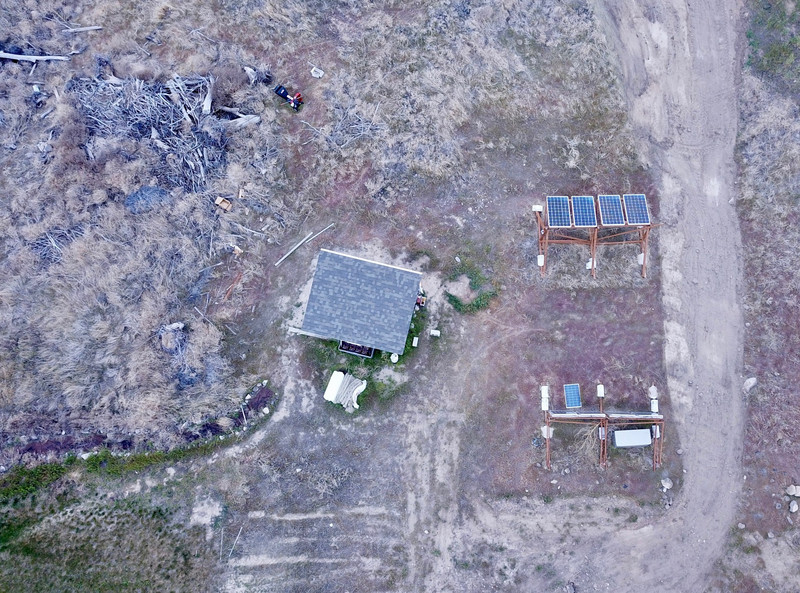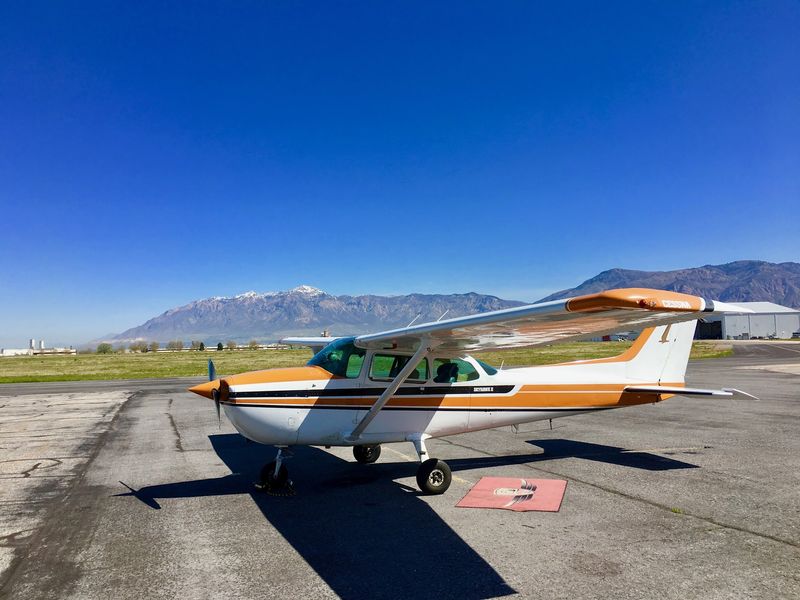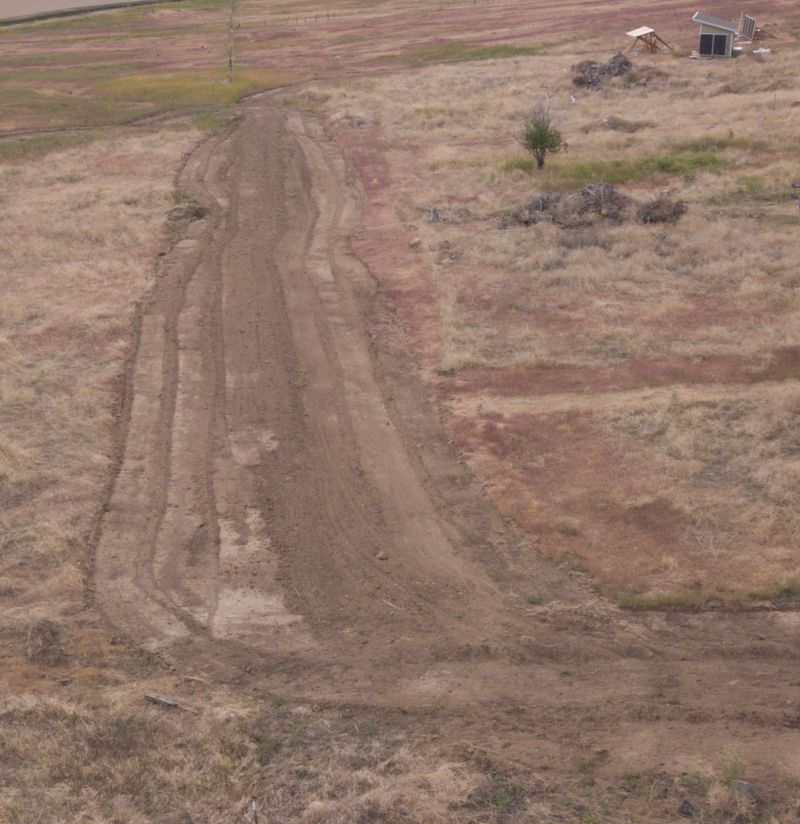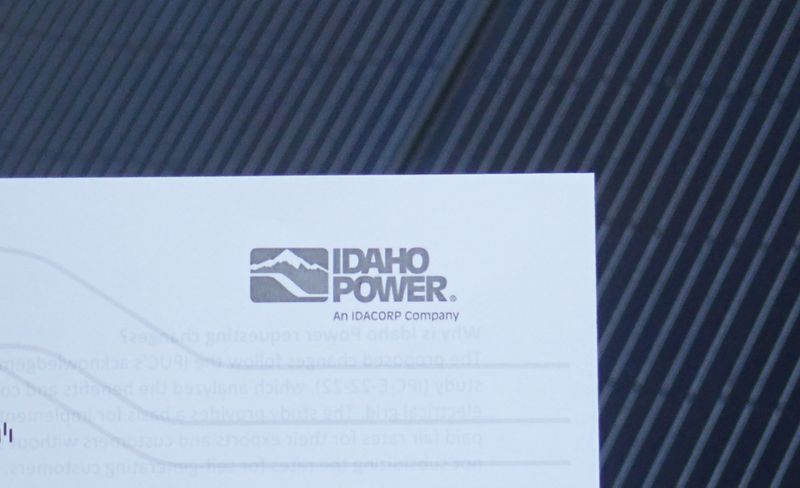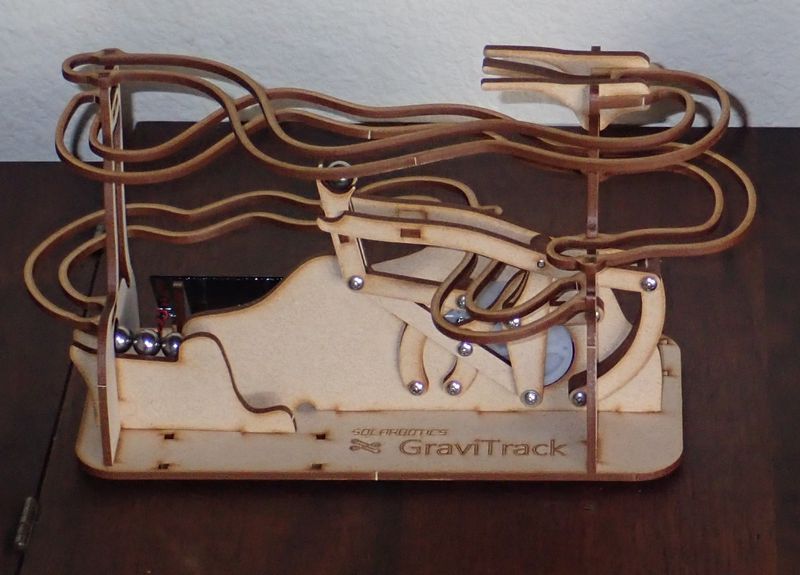“I want to go off grid with solar and batteries!”
I hear this, or some variant, increasingly often. It seems to be a more and more popular concept, especially after some of the recent events in which people were left without power for long periods of time. And, quite often, I assume the people asking are genuinely interested in what they see as the benefits of off grid power. They’re just not familiar with enough details to really have an understanding of what they’re asking, or what it asks of them.
This post is my humble attempt to put a lot of information in one spot, such that I can link people to it when they ask about off grid power. There are quite valid reasons for off grid power, but it’s not as easy or as simple as people tend to think. And it’s certainly not as cheap as people assume it will be.
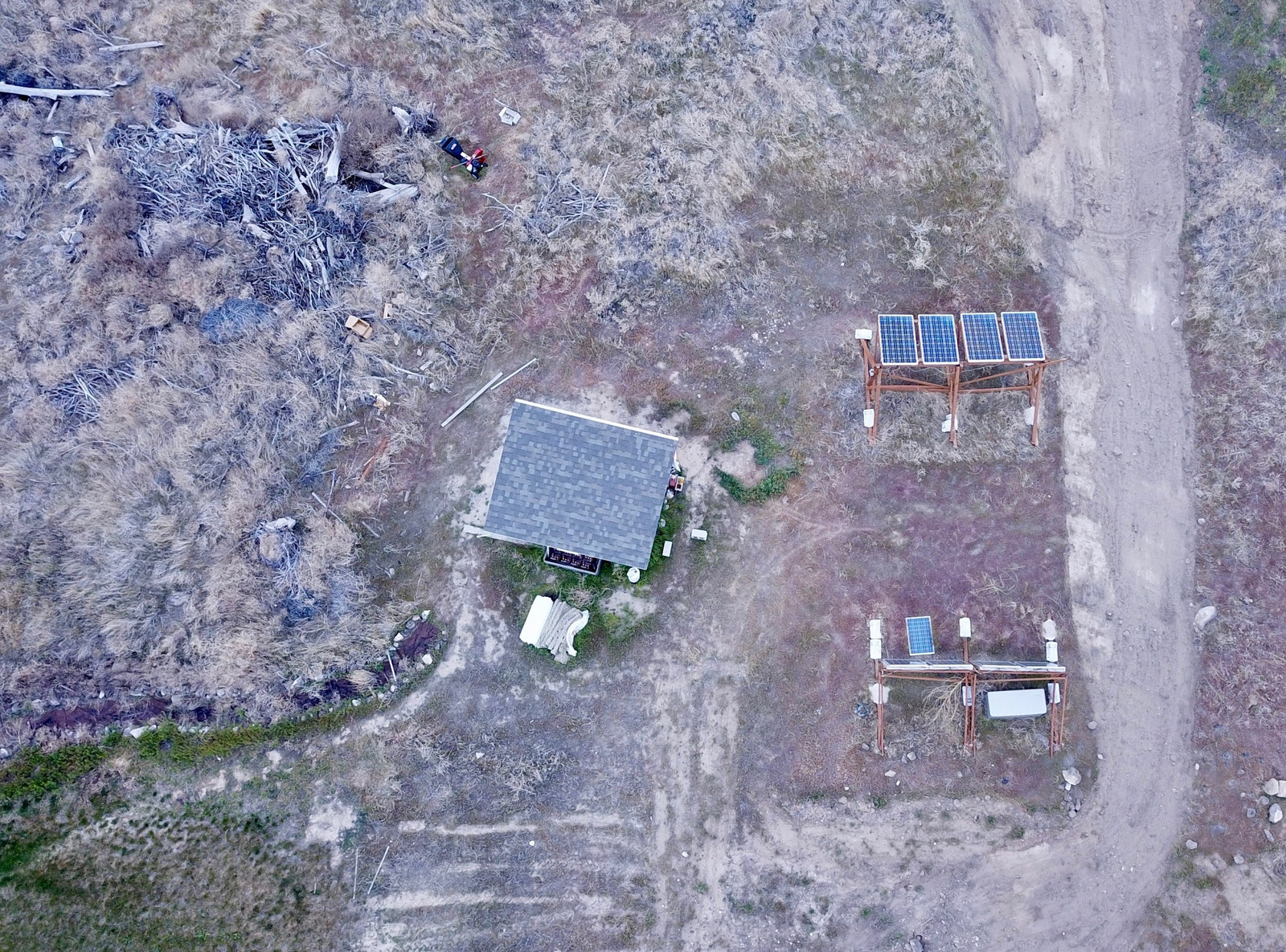
I’ve been dealing with a pure off grid office for nearly 2 years now. While I don’t (yet) have a house capable of sustained off grid use, I do live within my energy budget in my office every day I’m out there (which occasionally involves generator use), and I get to deal with a lot of the quirks of off grid power. So, if you’re interested in the pros and cons, keep on reading!
Off Grid Power
I didn’t realize until my Solar Shed Summary post that there are two conflicting definitions of “off grid” in use on the internet. One refers to an electrical generating system that is not tied to the “power grid” - so typically some combination of solar, wind, micro-hydro, and generator.
The other use refers to being “off the information grid” - some Jason Bourne-esque mix of not using banking, the internet (with anything tied to your name), not having utility accounts, and probably a bunch of other stuff I have no clue about (one might safely assume I have no interest in this, given that, you know, I have a blog).
If you don’t realize the difference, you get an awful lot of comments about how your office isn’t really “off grid” because it has an internet connection (despite it having no grid power).
I’m not talking about the second one here. I’m sorry if you’re looking for that and are disappointed, but that’s not the topic of conversation today, and I have no particularly useful advice there, as I assure you, I’m quite on that grid.
The topic here is off grid power - generating (mostly) reliable electricity without any contribution from “grid power” - the AC power that comes from centralized generating stations, through transformers, substations, house transformers, and eventually outlets. Off grid power is power generated and stored locally. Clear? Great!
Pros of Off Grid Power
Off grid power is pretty neat. You generate your own electricity, which is kind of cool, in a geeky way. You’re not reliant on the power grid, and power outages don’t bother you at all. Plus, you can build a system anywhere. If you’re miles and miles from the nearest power line, and the power company wants $100k to run power to you - doesn’t matter! You can generate your own power! If you’re mobile (say, an RV) - mostly indefinite boondocking, as long as you don’t run out of water.
… and, really, that’s about it for the pros.
Cons of Off Grid Power
Well, everything else. I can’t cover this in a few paragraphs, and the rest of the post is pretty much detailing the cons. It’s expensive, it’s not environmentally friendly, it’s fiddly, and you’d better enjoy maintaining your power system, because it’s sure not as easy as just flipping a switch and having infinite power, with 3-5 9s of uptime, depending on where you live.
Answer this question: “How do I feel about the concept of designing and operating my very own multi-source power generation and storage facility?” That’s what an off grid power system is - it’s a reasonably complicated power plant, but with the added complexity of storage (and the plant is radically too small to get any sort of decent efficiency). For some people (including myself), this concept makes them giggle with joy. It sounds awesome! You get to monitor generation, use, storage, check the frequency and voltage, and have an excuse to buy all sorts of cool shunts and meters! For other people, it sounds like a circle of Hell. They just want to flip the switch and have the lights turn on. Or push a button and have the kettle warm the water for their tea.
If you’re in the first category (excited), then some of the downsides of off grid power probably don’t count as downsides to you - they count as upsides. If you’re in the second category, well… maybe off grid power isn’t for you. At least not without some serious considerations as to the details.
A Typical Solar System
The common perception seems to be that you need some solar panels, some batteries (usually a particular brand is mentioned), and you’re good to go. That’s not at all the case for a typical off grid system, so it’s worth describing how a common system actually functions.
A typical off grid power system starts with the power generation. This can be solar, wind, micro-hydro, or generator (a pure generator based system is less common, they certainly exist, especially in the RV realm). Solar is, by far, the most common power source, but wind is often paired in for full off grid homes to help in the winter, and if you can find enough water for year round micro-hydro, you’re golden. Most year round systems have a generator as well as whatever other sources they have.
Solar panels for off grid power are usually set up in strings (panels in series) with those strings wired together in parallel at a combiner box. The string length (and therefore PV array voltage) is determined by overall system design, but 100-250V is a common range for the winter open circuit voltage (the open circuit voltage goes up as the panels get colder, so winter is the design factor), and there are some charge controllers that handle up to 600V, which is useful if you have a long run from the panels to the rest of the system (higher voltage means fewer amps for a certain wattage, which means you can use thinner wires - it saves a lot on long runs). The series nature of the panels means that shading is more of a problem than with typical microinverter based grid tie systems. If you are dealing with severe shading, DC optimizers can help improve system output, but they’re fairly rare. Off grid solar tends to be deployed such that all the panels in a string are in full sun at the same angle. If the roof isn’t suited to it, then the panels are ground mounted somewhere appropriate.
Wind turbines and micro-hydro are a bit more complicated to deal with, and I’ll touch on them a bit later.
Coming off the power source (or power sources) is a charge controller (or several). This unit handles converting the power from the energy sources into a form the battery bank can deal with. For a very small solar setup, this may be a simple PWM unit (a solid state switch - I use one on my morning panels) that connects the panels directly to the battery, but most off grid systems will use one or more MPPT controllers - Maximum Power Point Tracking. These are a controllable DC-DC converter that converts power from wherever the generation array is producing maximum power into whatever the current battery bank voltage is. So, it may convert 120V@10A (1200W) from the solar panels into 48V@24A (1152W) going to the battery. There are some losses in the charge controller (nothing is 100% efficient), but on any larger system, the gains of a MPPT controller make them entirely worth it. In the winter, a MPPT unit will extract significantly more power from solar panels than a PWM controller because it can utilize the higher voltages produced by cold panels.
Behind the charge controller is the battery bank. The details of the various battery technologies are the subject of other posts on this blog, and there are a huge number of details to consider in picking a battery technology and designing a battery bank that will work. Bigger is not always better in terms of cost effectiveness, given the nature of renewable energy, and batteries generally have a somewhat fixed useful life regardless of cycle count and how you take care of them, but it’s easy to kill them early with abuse. Avoiding killing lead acid is also the topic of another post on this blog. I’ll cover Tesla’s bit of marking later, but they’re not at all common in off grid systems, for very good reasons.
In a very small off grid system that runs purely 12V lights and appliances (small weekend cabins or hunting cabins, some RVs), this may be the end of the system. But most large systems keep going, because it’s quite expensive to wire a house for DC power (the wire size needed to safely run a lot of power is massive, which costs a lot). Everything runs on AC these days (even if it converts it internally to DC), so most off grid systems have an inverter.
An off grid inverter is a very different beast from the small micro-inverters that grid tie systems typically use, because many power-using devices rely on the ability of the power grid to provide massive surge currents for startup. A micro-inverter may be rated for 300W, and can provide exactly 300W - there’s no overhead beyond that. A typical off grid inverter may be rated at 2000W (for a small system), but can provide 4000W or 6000W briefly to help start compressors and motors. A larger inverter (the Outback Radian GS8048A as a specific example) is rated for 8000W sustained, 9000W for 30 minutes, 12000W for 5 seconds, and 16970W for 100ms (the ratings are in VA, which is yet another complexity for starting inductive loads, but I’m ignoring that particular bit of complexity right now - just be aware that starting motors requires more capacity than you think).
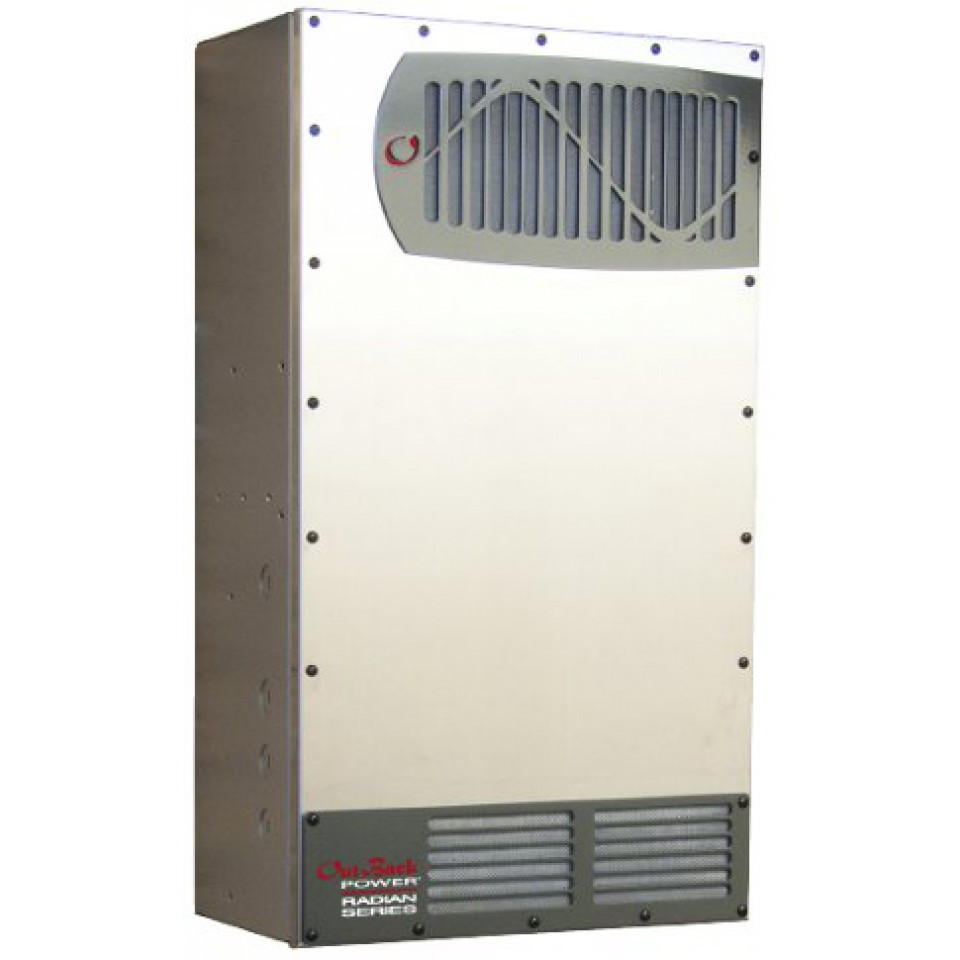
Beyond being able to simply provide power, an off grid inverter is responsible for every other aspect of power in the system as well. It has to rapidly respond to changing loads, deal with inductive or capacitive loads, generate and maintain a 60Hz (or 50Hz) output frequency, and possibly deal with multiple phases and balancing them as well (a large off grid system is almost always two phase/240V to power shop tools, well pumps, irrigation pumps, etc). There’s a lot that goes into it, which is why they’re significantly more expensive than a micro-inverter that simply has to sync to an external signal and output some amps.
Finally, most off grid systems have a generator and charger as well. The generator may run into the inverter/charger (many off grid inverters include charging and transfer switch functionality), or may run through separate hardware. Historically, the generator tended to be used for heavy loads, but recent advances in power electronics and inverter design make that less common than it used to be (two decades ago, inverters that could start a circular saw didn’t really exist at a price anyone could afford, so most systems used the generator for that). Today, the generator more frequently serves as a backup power supply in case something goes wrong with the battery/inverter, and it’s used in the winter when there’s not enough power coming from the renewable sources to meet demand (in my area, I’ll get at least a week of inversion a winter, which means no sun and no wind).
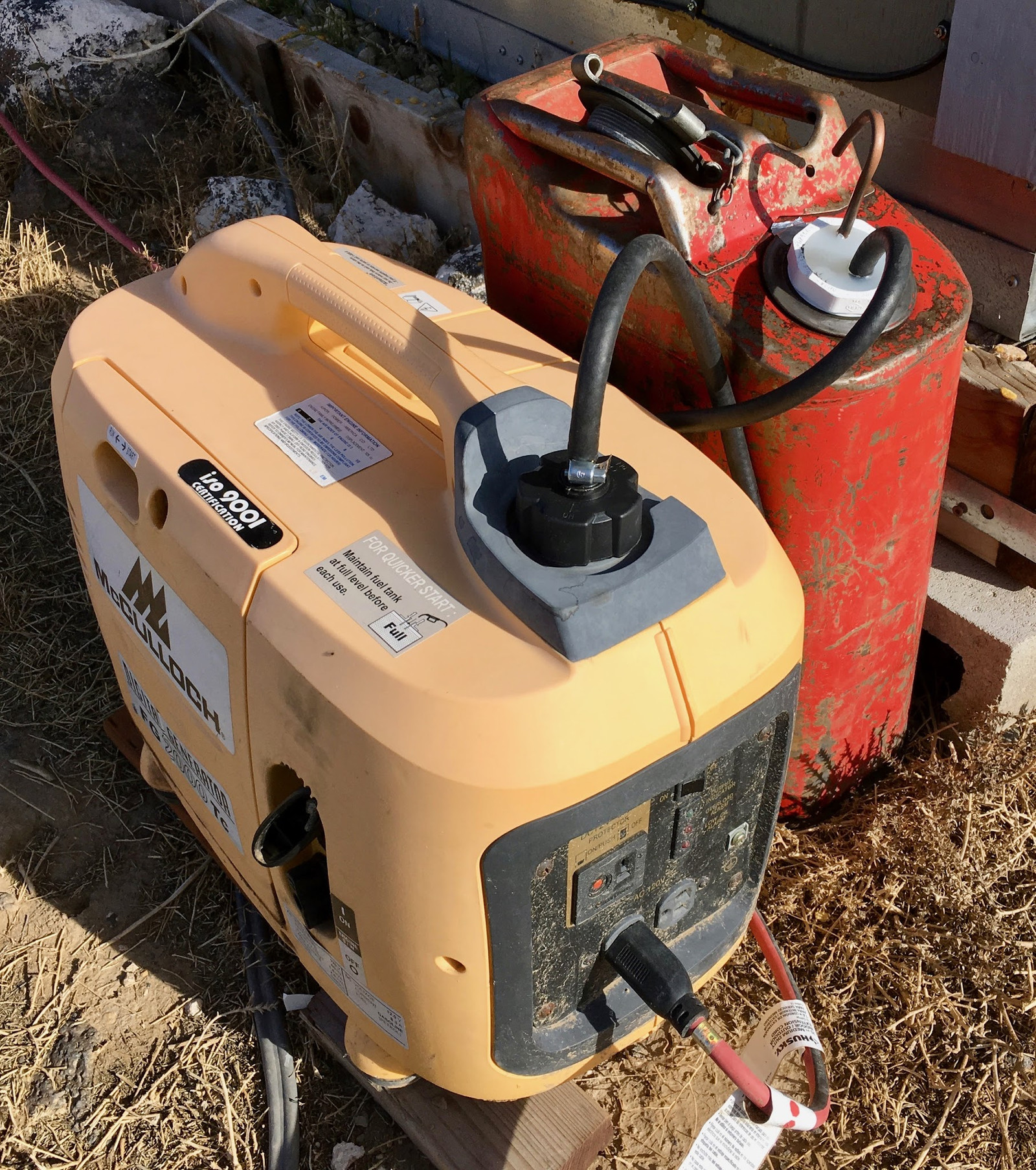
Plus, at various stages in the system, there’s monitoring and logging. Any serious off grid system should have good data logging and reporting for the system, because this makes it easy to find problems before they get serious. You should spend time looking at them instead of just ignoring them, because learning how the system functions lets you identify maintenance that needs to happen when things are different. I can usually tell when my batteries need water based on morning voltages, because they tend a bit higher when the batteries are lower (higher specific gravity electrolyte). There are lots of little quirks like that to system operation, and they matter. Good monitoring will let you identify problems with your expensive battery bank when you can still correct them. Without monitoring, you simply run blind until the system stops working, then throw money at it again.
Wind and Micro-Hydro
Far less common than solar are wind and micro-hydro setups. Wind is what you think - a turbine, spinning in the breeze (or, ideally, much stronger winds). Micro-hydro is a small turbine sitting in some stream of water. This requires a reliable source of water (and a decent head), but can make for reliable year round power (or, in some areas, reliable power through the winter, when solar isn’t able to provide much).
There are two types of wind turbines: Toys, and serious turbines. If you can buy it for a reasonable amount of money and it doesn’t show up in the back of a semi truck, it’s probably a toy. The small turbines generate very, very little energy in typical winds, and only start producing serious power in excessively windy conditions. They’re not worth the cost. Large turbines, mounted high, are useful - but they also tend to be very expensive. A good wind turbine is best done as a DIY project, and the OtherPower folks have a lot of experience they’re willing to share.
Micro-hydro typically requires plumbing, filters, penstocks, and a lot of other engineering I simply don’t know much about. Home Power Magazine is a great source for a lot of good information on how to do a good micro-hydro setup.
Any sort of turbine requires a “dump load” to handle the full output from the turbine when the battery bank is full and there’s less demand on the system than the turbine is currently producing. A turbine cannot be unloaded or it will overspeed and come apart in short order, so there has to be some way to dump the power generated when it’s not otherwise needed. This dump load is typically an air cooled resistor bank, though it’s quite common to first heat water with the excess energy before going to the air cooled system. In the winter, this can be a quite welcome source of heat!
Off Grid Living
With the system concepts explained, what does living with off grid power consist of?
For a typical solar-only system, it’s about nine months of things working smoothly, and three months of serious attention to power use, every single year. Some areas may be slightly better, some may be slightly worse, but that’s about what you can expect on average.
Spring and fall are the easiest months. The air is cool, which means the panels are cool (and produce more power if you’ve installed a MPPT charge controller). There’s less demand for air conditioning or heating, which reduces overall power demand and makes things easier. The days are still fairly long, so there’s a lot of energy to suck in during the day. The system still needs attention every now and then, but a properly designed and configured system is fairly easy to live with in the spring and fall.
Most people assume summer is the easiest, but it’s often a bit tricky. Yes, the days are long and bright, but the days are also hot. For something using earth coupled cooling, this isn’t a big deal, but something with mechanical cooling (air conditioning) is going to use a lot of power. The panels are also quite hot, which reduces power production by a good bit. Finally, summer (in many areas) has less rain, which means the panels are going to get dirty over the course of the summer. In my area (western United States), we’ve got plenty of wildfire smoke as well through the summer, and a hot day with heavy smoke doesn’t produce much power, while you still need a lot of power for cooling (plus the smoke will make the panels filthy in short order).
That’s the sun. It’s a dull orange disk in the sky under the heavy wildfire smoke. Why is there a large blackened region just beyond my solar panels? Long story, involving a much more local wildfire. Maybe I’ll tell it sometime. When it’s hot, hazy, and there’s no sun, solar is tough.
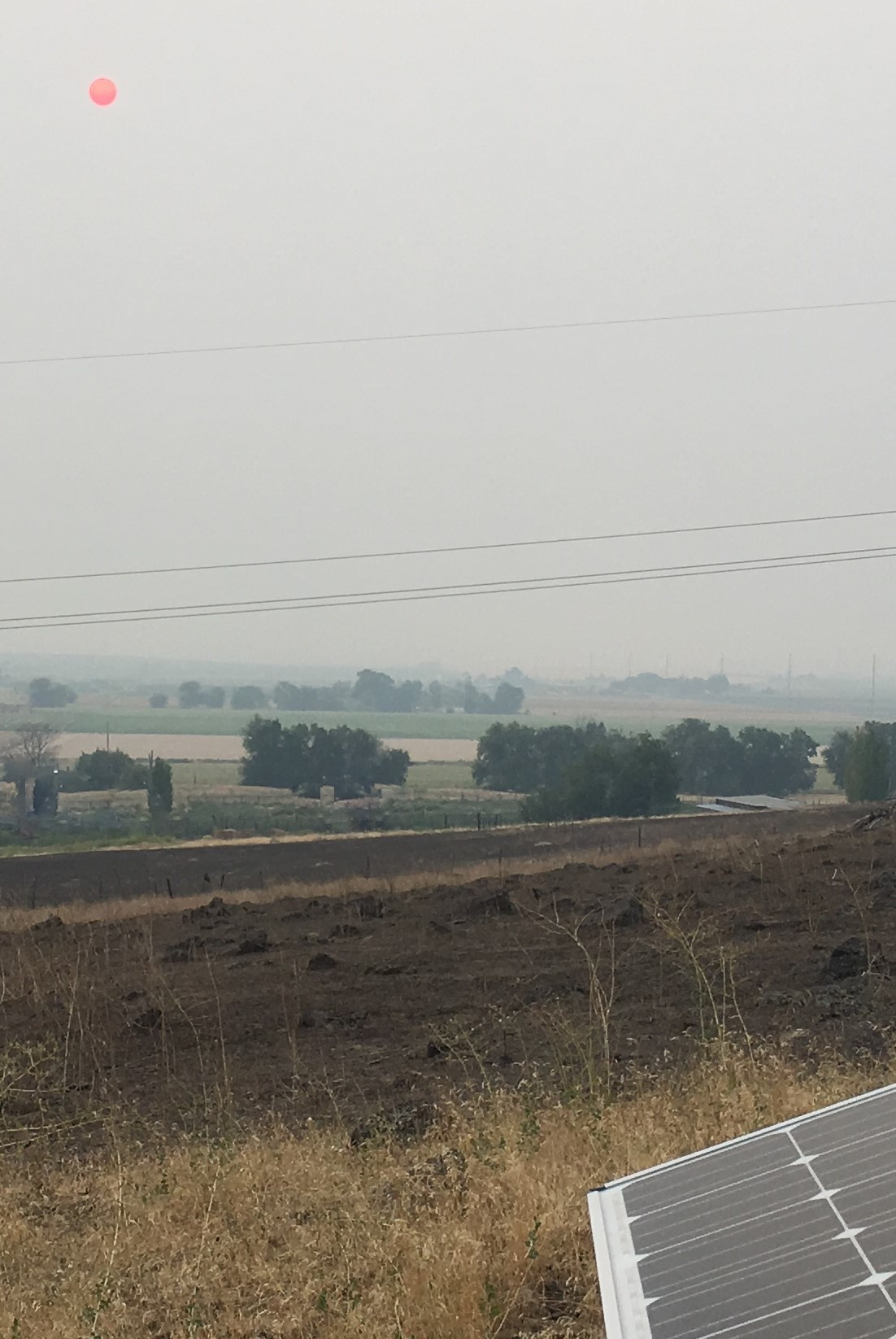
Winter is where things get tricky. There’s simply no power available with heavy winter clouds. Wind can help, if you live somewhere that reliably gets wind in the winter, but turbines can still ice up in the freezing rain and stop working efficiently. “Not using power” works, to an extent, but winter is often just generator time. Did you do your generator maintenance the previous summer? Does your generator start, reliably, when it’s quite cold out? Are you sure? You’ll find out it won’t start when cold when it’s really, really cold out.
Heating is also not easy in the winter. Most off grid systems will either use biomass (wood/pellet stove) or propane for heating. Propane heating is quite expensive (I heat with it, but don’t have much space to heat), and wood can be a good bit of work, though pellet stoves have come a long way, if you can get pellets locally. Heating with electricity is simply not possible in most areas - there’s just not enough excess. For a house system, a ground source heat pump is worth considering, but it still requires a lot of power to run, and should be paired with some alternative method of heating for the days when there’s just no power.
The details of your system will impact how much impact winter has. If you’ve got a system with a large generator and have a properly configured remote start, you could just generator through, letting the system run the generator when it wants, but that gets expensive, in a hurry. And it goes through a lot of fuel. It’s much better to limit your use when the system isn’t generating much, but you’ll still need the generator. Most smaller systems rely on a pull start generator.
The Nature of Off Grid Power
Expensive, environmentally unfriendly, and somewhat maintenance intensive.
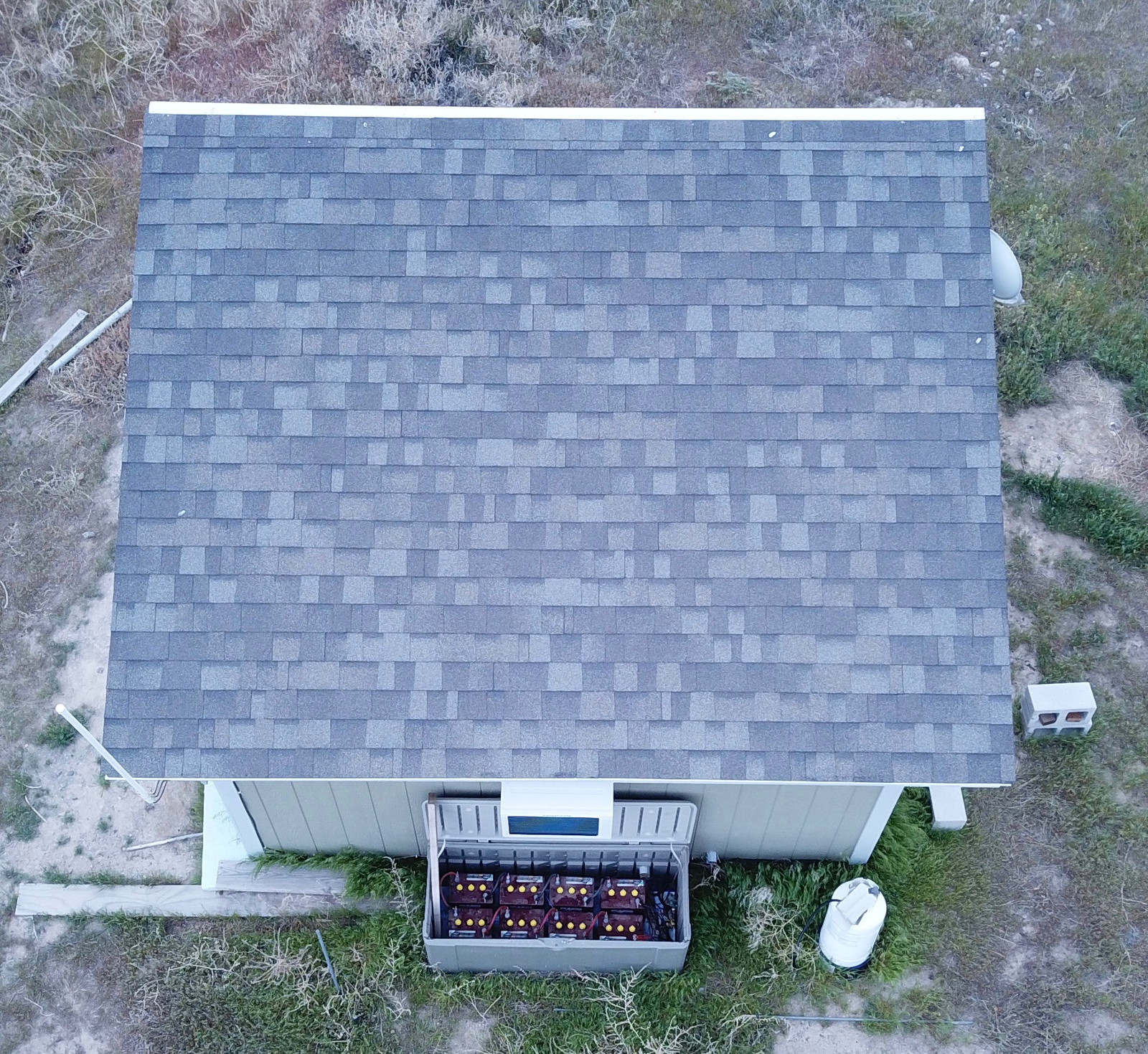
Off grid power is incredibly expensive. Solar and battery is cheaper than 24/7 generator power, but providing your own power is just insanely pricey. Think $0.50/kWh range - for all the power, not just during peak times. Most of the cost relates to the lifespan of the batteries, though the rest of the system isn’t particularly cheap either (and doesn’t have an unlimited lifespan). A lot of this depends on how you design the system and how much work you do yourself, but don’t expect to beat grid power with an off grid system. You might beat the most expensive tier in your area, depending on where you live, but expect a far higher cost per kWh. On the plus side, you may end up with better power reliability!
Environmentally, off grid power is not particularly great either. The batteries require a good bit of energy to manufacture, often a good bit of mining and material extraction, and you have to replace them every decade or so. Plus, the panels you use aren’t able to produce as much power as they could feeding into the grid (because there will be large parts of the year when the battery bank is full and the panels are lounging along doing nearly nothing). It’s not a complete disaster, but neither is it all flowers and kittens and amazing green free energy. Lead acid, at least, has a good recycling pipeline.
Finally, off grid power requires a good bit more maintenance than grid power. You have to pay attention to it. If you’ve got flooded lead acid batteries, they need water every now and then. Sealed lead acid can still use some voltage testing. Lithium is better on this front, but doesn’t get you away from having to monitor the system state and only use power when there’s power available. It is not nearly so easy as a typical grid system, in which there is no maintenance to speak of.
Generators and Chargers
It’s certainly possible to run without a generator, but almost every off grid power system should have a generator and charger. Up until fairly recently, a generator was required for heavy loads (power tools, a washer, etc), though recent trends in inverter power delivery have eliminated that need. A generator is needed for charging the batteries when there’s no power coming from the sky. Solar panels don’t work when there’s a week of dark and cloudy weather, and lead acid batteries do freeze if they get cold enough while discharged enough (at least in my area, this is almost always with no wind around either).
Plus, most off grid power systems have a wide range of single points of failure. A generator that can run your loads (or at least some of them) is a good backup device. It’s not ideal, but if you’re waiting for a replacement inverter, being able to power your system with a generator is kind of nice.
Typically, the generator will output AC (inverter generators are nice but tend to be more limited in power output for the price), and a charger will feed the battery bank with them. One can find combination inverter/chargers (and I have a nice Aims Power one), but if you have a big inverter and a smaller generator, having a separate charger is a good idea. Most inverter/chargers pass the “shore” AC through when the generator is running, which means you can’t start a load beyond what your generator will start. My inverter has no problems starting my air conditioner (brief peak around 2kW), but my generator (1.6kW max) won’t start it. If I had a separate charger, I could be charging the battery bank from generator and still run everything from the inverter. It’s a minor issue, but worth mentioning.
Generator fuel is another topic worth covering briefly. Because a properly sized system will easily run most of the year without generator (I prefer somewhat overpaneling since panels are cheap), the generator won’t be needed quite a bit of the time. A gasoline generator can gum up the fuel system, especially in the summer - you should drain the carburetor and fuel tank before storing it for the summer, unless it happens to go with you for camping trips and the like. Propane is a much better generator fuel for a “winter use” generator. It stores more or less perfectly (it doesn’t go bad like gas does), it’s a bit easier to start with in the winter, but it does require a bit more effort to haul it in. If you’ve got a large propane tank for heat, absolutely run the generator from it as well (and maybe have a few smaller tanks in case the big one runs out). If you don’t have a large enough tank to run the heat and the generator, it’s a bit more of a toss up. I still use gas for my generator, complete with extended run tank, but I wouldn’t mind going to propane at some point. The propane carburetors are annoyingly expensive (roughly what I paid for my generator), so I haven’t gone down that road - yet.
So: Why Do You Want Off Grid Power?
All of that said, there are certainly some valid reasons to go with an off grid power system. It boils down to how much you’re willing to deal with the downsides and maintenance of such a system, and if it actually makes sense for your situation. Here are some of the common reasons I see, and my thoughts on them.
“I’m going to get some solar panels, a PowerWall, and kick the utility company to the curb!”
Or some variant on this theme. I see this a lot, especially in certain circles, and this type of comment is, near as I can tell, a virtue signaling throwaway that won’t be followed through on. It’s typically someone with a power hungry electric car, presumably a large-ish house (I suppose someone, somewhere, owns a Tesla and lives in a tiny house, but that’s likely to be rare), and zero understanding of the nature of off grid solar. It’s not that the task is literally impossible, but it’s likely to be so expensive as to make it never happen (and cost radically more than even expensive grid power). A typical suburban home is not designed for off grid power, and pretty much only functions with an awful lot of energy input for heating, cooling, and general function. They’re not efficient, and they are oriented based on what’s convenient, not where the sun is.
If one really, really wanted to do this, I’d suggest having a natural gas furnace as a backup for winter heat, and a natural gas generator with auto-start. But, really, it’s a silly thing to do.
Plus, the PowerWall is not some magic micro-fusion generator. It’s a fairly small battery pack that consumes some amount of energy to thermally manage the cells (How much? Nobody has any clue!), and it isn’t rated for off grid use. Plus, you can’t get one on any sort of schedule - “Sign up for a preorder, wait for someone to call” is not a useful way to order a product you need to build a house.
“It’s criminal that we’re not using the free energy coming out of the sky, man! Free power for life!”
I see this a bit less, but I have run across it. Yes. The energetic photons are free. The equipment to capture them and turn them into electrons is certainly not free, and certainly not free of environmental consequences.
If one wanted to build a system along these lines, you could. Build something without battery storage, that provides a trickle of power when the sun is actually shining. Accept that you won’t have power in the winter, or during any darker weeks, and have fun. Direct DC use from the panel would be good here, and perhaps one might add a tiny little battery to buffer power for when clouds go past, but nothing sized for overnight storage or weeks of darkness. You’d be able to charge a cell phone, and maybe run a laptop, but that’s about it. Nothing resembling grid power.
“The power goes out a lot where I live, and I’d like to have proper backup power for my house.”
This is another reason I hear for wanting off grid power - or, really, a grid tied system that can run without the grid for sustained periods of time. I plan to put something like this on my house at some point, and the costs are higher than a typical micro-inverter based system, but this is a reasonable enough system design that I’ll cover in great detail at some point in the future (when I have time and money for it, which is unlikely to be particularly soon).
The cheap way to do it is to have an automatic transfer switch and a backup generator, but if you’d like something nicer, there exist some inverter/chargers that will run most of a home and can request generator power when needed. One would have a smaller battery bank for this sort of setup (AGM is well suited to standby use like this), and rely on the generator instead of batteries for higher overnight loads. If you wanted, you could run your house on an Outback Radian and generator (plus some batteries) without any solar at all!
“I’m building a house somewhere awesome, and the power company wants $5k/$20k/$100k to run a power line.”
This can be a very good reason to use off grid power! A lot of the decision is based around how convenient one wants power, and how much the power company wants. I wouldn’t suggest going this route on anything under about $10k to run a new power line in, but for higher costs, an off grid power system is a reasonable alternative. Plus, one might consider the repair time for a long power line, if a tree falls on it during a storm. You’d be at the far end of the repair queue.
My advice for this reason is to subscribe to Home Power Magazine, with the digital archive option. Start reading backwards (designs from the 80s and 90s are historically interesting but not as useful today), and look closely at the off grid homes featured. Designing a home specifically for off grid operation is a far better option than building a standard box and trying to power it with solar, and the system will be much smaller for a well designed home. Heavy insulation, earth coupling, and various other techniques can lead to a home that requires very, very little energy to remain comfortable year round.
You’ll still have to pay attention to energy, and still likely have to heat with biomass or propane, but a properly designed off grid home, out in the middle of nowhere, can work very well indeed!
“I have an RV and I hate generators.”
This is another good reason to design an off grid power system. Up until fairly recently, the general belief was that you couldn’t run RVs without a generator - but there are plenty of people doing this now. One of the better known is the Technomadia folks (a bus conversion that’s pure electric - they talk a lot about solar and battery for sustained off grid living).
RVs fall into two categories: Short trip use (weekend or so), and full time living (or anything longer than about a week). For short duration use, going with a larger battery bank and a bit less solar is a viable option - you may not make up the charge every day, but you have enough capacity for the trip. For a full timer RV, extra solar matters, and a lot of people carry panels they can deploy on the ground for increased collection area in the winter.
Handy Bob has much to say about solar in RVs.
Consider the Problem Closely
My goal here isn’t to discourage you from going with off grid power. It’s simply to describe some of the nature of it, and to give you a bit more in the way of information to make a decision. Many of the common perceptions about it are simply wrong, and I haven’t found many places that compile a lot of information in one place. This is one of my series of posts related to solar and off grid power, and you might find something of value in the others along this line as well.
If you want to build an off grid power system - go for it! Just go into it with your eyes open.
Oh, and if you’re curious about the top photo, where it looks like the two banks of panels are aimed quite differently - they are. I’m lazy. I get enough power out of them aimed like that, and haven’t had to adjust the top bank yet. The top bank is nearly vertical, which captures the low winter sun and sheds snow well. The lower bank is aimed closer to summer peak, and while I should lower it a bit, I haven’t felt like doing that. It’s heavy, and I’ll probably need to borrow the winch truck to lower it safely. Perks of being overpaneled - optimizing every watt doesn’t matter!
Comments
Comments are handled on my Discourse forum - you'll need to create an account there to post comments.If you've found this post useful, insightful, or informative, why not support me on Ko-fi? And if you'd like to be notified of new posts (I post every two weeks), you can follow my blog via email! Of course, if you like RSS, I support that too.
